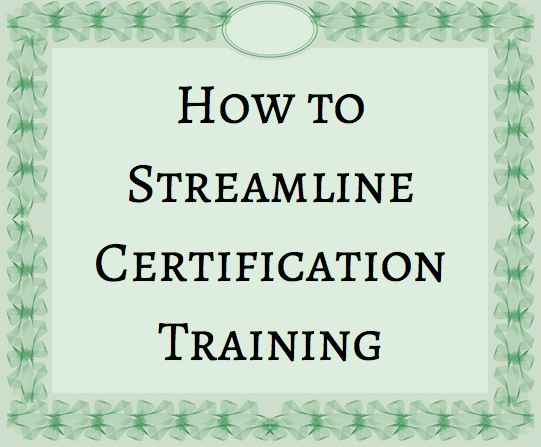
For any industry, the certification process can be lengthy, complex, and overwhelming—especially when presented in a traditional learning format.
Travel expenses, space rental, hard copy materials—all of these things add up and make for an expensive endeavor.
Enter the eLearning solution. Converting a previously expensive and time-consuming certification training to an eLearning format can have incredible positive impacts.
In this post, we’ll look at some of the ways you can help a client through the eLearning conversion process and address their needs and concerns along the way.
Why Convert Certification Training to eLearning?
The first question you’ll need to answer is, “Why should we convert to eLearning?”
Your Response: Delivering in-person certification training can be an expensive undertaking, and it also limits reach in terms of attendance. Plus, traditional training can mean days and days of in-person instruction—which means days upon days of extra costs. Scheduling that much time away for busy professionals is never easy, either.
Other objections: If your client is concerned about maintaining a discussion based element to the training, eLearning can help with that, too.
Creating a Blended Solution
Using your LMS of choice, you can transform certification training into individual learning modules. Each should leverage interactive elements that kept the modules engaging.
For interactive discussion, use a blended solution by adding a live webinar with an instructor-led discussion. A supplemental course workbook can be created for the more complex exercises within the eLearning component. Then, learners can be instructed to bring their completed workbooks to the live session and their completed exercises can act as the basis for group sharing.
All of these different elements can increase the training’s scalability, engagement, and reach, but within a much more flexible and personalized experience.
Results of Transitioning to eLearning
Switching from in-person to an eLearning format can allowed your client to reach new markets, create self-paced learning, and, possibly best of all—eliminate travel expenses and space rental required.
With so much more flexibility, your client may be able to reach new audiences by offering discounts that get them in front of many new clients and future partners.
Takeaway Lessons
A few things to note, in review:
-Transitioning to eLearning cuts down on expenses incurred from travel, space rental, and overnight stays
-eLearning allows the client to reach new markets thanks to course scalability
-Essential elements of the original course can remain intact, but be presented within a different medium eLearning allows the client to reach new markets thanks to course scalability
For companies who offer certification training of any kind, this transition is worth considering—not only for its cost benefits, but also for the freedom to explore new opportunities it presents as well.
